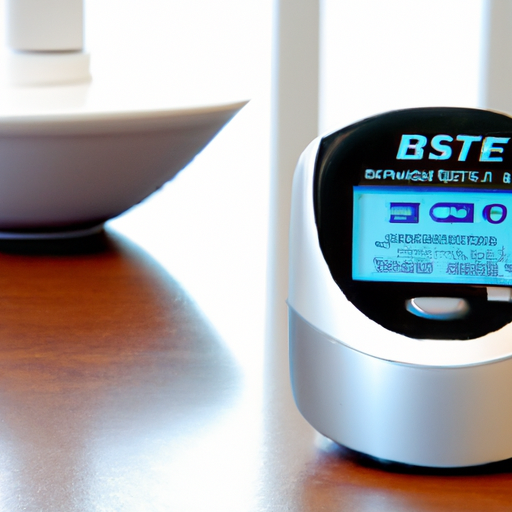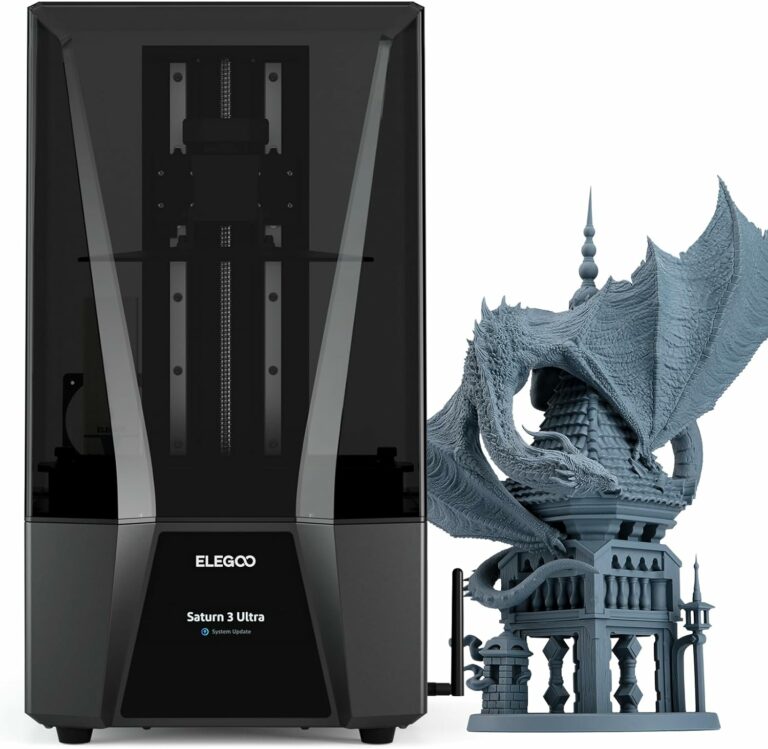Imagine having complete control over your home’s temperature from the palm of your hand. The battle of the smart thermostats is heating up, and there are three major players vying for your attention: Nest, Ecobee, and a host of others. In this article, we will explore the features, benefits, and drawbacks of each thermostat, helping you make an informed decision on which one is best suited for your home. Get ready to upgrade your heating and cooling game!
Nest Smart Thermostat
Features and Functions
The Nest Smart Thermostat is a leading smart home device that offers a range of innovative features and functions. One of the key features of the Nest Thermostat is its ability to learn your heating and cooling preferences and create a personalized schedule based on your patterns. This learning capability ensures that your home is always at the perfect temperature, without the need for constant adjustment.
In addition to its learning capabilities, the Nest Thermostat also offers remote control through a mobile app, allowing you to adjust the temperature of your home from anywhere. This is a convenient feature that allows you to make changes on the go, ensuring optimal comfort and energy efficiency.
The Nest Thermostat is also equipped with sensors that can detect when you are away from home and automatically adjust the temperature to conserve energy. This feature, known as “Away Mode,” helps to reduce energy consumption and lower utility bills.
Pros of Nest Smart Thermostat
There are several advantages of choosing the Nest Smart Thermostat for your home. One of the biggest pros is its learning capabilities, which eliminate the need for manual programming and ensure optimal comfort and energy efficiency. The Nest Thermostat can learn your temperature preferences and schedule, making personalized adjustments based on your habits.
Another pro of the Nest Thermostat is its remote control capabilities. With the mobile app, you can easily control the temperature of your home from anywhere, ensuring that your home is always at the perfect temperature when you arrive.
Additionally, the Nest Thermostat’s “Away Mode” helps to conserve energy by automatically adjusting the temperature when you’re not at home. This feature can lead to significant energy savings and reduced utility bills.
Cons of Nest Smart Thermostat
While the Nest Smart Thermostat offers a range of impressive features, there are a few potential downsides to consider. One of the main cons is its price. The Nest Thermostat is generally more expensive than other smart thermostat brands on the market. However, many users find that the energy savings and convenience justify the higher price tag.
Another potential con is the complexity of the Nest Thermostat’s installation process. Some users may find it challenging to install the thermostat themselves and may require professional assistance, which can add to the overall cost.
Nest Smart Thermostat Pricing
The Nest Smart Thermostat is available at a higher price point compared to other smart thermostat brands. The price typically ranges from $200 to $250, depending on the model and any additional features. While this may seem steep, many users find that the energy savings and convenience offered by the Nest Thermostat make it well worth the investment.
User Reviews
Users have generally been highly satisfied with their experience using the Nest Smart Thermostat. Many users praise its learning capabilities, remote control functionality, and energy-saving features. The ease of use and intuitive user interface are also frequently mentioned as positives. Some users have reported minor issues with installation or connectivity, but overall, the Nest Smart Thermostat has received overwhelmingly positive reviews.
Ecobee Smart Thermostat
Features and Functions
The Ecobee Smart Thermostat is another top contender in the smart thermostat market. Similar to the Nest Thermostat, the Ecobee Thermostat offers a range of features and functions designed to enhance comfort and energy efficiency.
One standout feature of the Ecobee Thermostat is its built-in room sensors. These sensors monitor temperature and occupancy levels, allowing the thermostat to optimize heating and cooling for specific rooms. This ensures that each room in your home is at the desired temperature and helps to eliminate hot and cold spots.
The Ecobee Thermostat also boasts advanced scheduling capabilities that allow you to set different temperature preferences for different times of the day. This level of customization ensures optimal comfort and energy savings throughout the day.
Pros of Ecobee Smart Thermostat
There are several pros associated with the Ecobee Smart Thermostat. One key advantage is its room sensor technology, which allows for targeted heating and cooling. This is particularly beneficial for larger homes where different rooms may have different temperature needs.
Another pro of the Ecobee Thermostat is its advanced scheduling capabilities. With the ability to set different temperature preferences for different times of the day, you can ensure that your home is always at the perfect temperature without wasting energy.
Additionally, the Ecobee Thermostat offers compatibility with a wide range of smart home devices, allowing for seamless integration and control through various platforms.
Cons of Ecobee Smart Thermostat
Despite its many advantages, the Ecobee Smart Thermostat does have a few potential downsides. One common criticism is that the user interface can be complex and overwhelming, particularly for those who are not tech-savvy. However, once users become familiar with the interface, most find it easy to navigate.
Another potential con is the lack of a learning feature. Unlike the Nest Thermostat, the Ecobee does not have the ability to learn your temperature preferences and create a personalized schedule automatically. Instead, users must manually set their preferred temperature schedule.
Ecobee Smart Thermostat Pricing
The Ecobee Smart Thermostat is generally priced competitively compared to other smart thermostat brands. Prices typically range from $150 to $200, depending on the model and any additional features. Despite being slightly cheaper than the Nest Thermostat, the Ecobee offers a range of advanced features that make it a popular choice among consumers.
User Reviews
Users have generally been pleased with their experience using the Ecobee Smart Thermostat. The room sensor technology is a standout feature, with many users noting that it helps to eliminate hot and cold spots in their homes. The advanced scheduling capabilities and compatibility with smart home devices also receive positive reviews. Some users have expressed frustrations with the initial setup process, but overall, the Ecobee Smart Thermostat receives high praise for its performance and features.
Other Smart Thermostat Brands
Comparison of Other Smart Thermostat Brands
There are several other smart thermostat brands on the market, each offering its own unique features and benefits. Let’s compare some of the top contenders to Nest and Ecobee.
Features and Functions
While specific features will vary depending on the brand and model, most smart thermostats offer basic functions such as remote control, scheduling, and energy-saving modes. Some brands may also offer additional features such as voice control, geofencing, or compatibility with smart home devices.
Pros of Other Smart Thermostat Brands
Other smart thermostat brands have their own advantages that may appeal to different users. Some brands may offer more affordable options, making smart thermostats accessible to a wider audience. Others may have unique features or functionalities that set them apart from the competition.
Cons of Other Smart Thermostat Brands
Just as with any products, other smart thermostat brands may also have some drawbacks. These could include limited compatibility with certain HVAC systems, less intuitive user interfaces, or fewer advanced features compared to leading brands such as Nest or Ecobee.
Pricing
The pricing of other smart thermostat brands can vary significantly depending on the brand and model. Some brands may offer more budget-friendly options, while others may be priced similarly to Nest or Ecobee.
User Reviews
User reviews for other smart thermostat brands will vary depending on the specific brand and model. It’s important to consider user experiences and ratings when making a purchasing decision to ensure that the chosen smart thermostat meets your specific needs and expectations.
Energy Efficiency
Nest’s Energy Saving Features
The Nest Smart Thermostat offers a range of energy-saving features that are designed to help reduce energy consumption and lower utility bills. One such feature is the “Away Mode,” which automatically adjusts the temperature when you’re not at home. This ensures that energy is not wasted on heating or cooling an unoccupied space.
Another energy-saving feature of the Nest Thermostat is its ability to learn your temperature preferences and adjust the schedule accordingly. By understanding your habits and patterns, the Nest Thermostat can create a customized schedule that minimizes energy usage while maintaining optimal comfort.
Ecobee’s Energy Saving Features
Similar to the Nest Thermostat, the Ecobee Smart Thermostat also offers energy-saving features that help to reduce energy consumption. The Ecobee Thermostat uses its room sensors to detect occupancy and adjust the temperature accordingly, ensuring that energy is not wasted on empty rooms.
Additionally, the Ecobee Thermostat allows for advanced scheduling, allowing users to create personalized temperature preferences for different times of the day. This level of customization helps to ensure optimal comfort while reducing energy usage when it’s not needed.
Comparison of Energy Efficiency
Both the Nest and Ecobee Smart Thermostats offer impressive energy-saving features that can lead to reduced energy consumption and lower utility bills. The Nest Thermostat’s learning capabilities and “Away Mode” are well-regarded for their ability to optimize energy usage. On the other hand, the Ecobee Thermostat’s room sensors and advanced scheduling provide targeted heating and cooling, minimizing energy waste.
Ultimately, the energy efficiency of a smart thermostat will depend on factors such as individual usage habits, home size, and climate. Users should consider their specific needs and preferences when choosing a smart thermostat for optimal energy efficiency.
User Experiences with Energy Efficiency
Users have generally reported positive experiences with the energy-saving features of both the Nest and Ecobee Smart Thermostats. Many users have noted significant reductions in their energy bills after installing these thermostats. The ability to customize and control temperature settings has allowed users to fine-tune their energy usage and optimize comfort.
Smart Home Integration
Nest’s Integration with Smart Home Devices
The Nest Smart Thermostat is known for its seamless integration with a wide range of smart home devices. It works well with popular voice control platforms such as Amazon Alexa and Google Assistant, allowing users to adjust the temperature using voice commands. The Nest Thermostat can also be integrated with other Nest products, such as security cameras and door locks, for a comprehensive smart home experience.
Ecobee’s Integration with Smart Home Devices
Like Nest, the Ecobee Smart Thermostat also offers compatibility with popular smart home devices. It can be integrated with platforms such as Amazon Alexa, Apple HomeKit, and Google Assistant, allowing for voice control functionality. Additionally, the Ecobee Thermostat can be connected to other smart home devices, such as smart lights or motorized blinds, for enhanced automation and convenience.
Comparison of Smart Home Integration
Both the Nest and Ecobee Smart Thermostats offer extensive integration options with various smart home devices and platforms. The choice between the two will largely depend on personal preferences and existing smart home ecosystems. It’s important to ensure that the chosen smart thermostat is compatible with the existing smart home devices or platforms to maximize integration capabilities.
User Experiences with Smart Home Integration
Users have generally reported positive experiences with the smart home integration capabilities of both the Nest and Ecobee Smart Thermostats. The ability to control the thermostat through voice commands or integrate it with other smart home devices has been highly praised. Many users appreciate the convenience and increased automation that smart home integration brings to their daily lives.
Installation Process
Nest’s Installation Process
The installation process for the Nest Smart Thermostat can vary depending on the specific model and the HVAC system in your home. However, Nest provides detailed installation instructions and videos to guide you through the process. It is generally recommended to turn off the power to the HVAC system before installation and to carefully follow the provided instructions.
While some users may feel comfortable installing the Nest Thermostat themselves, others may prefer to hire a professional to ensure a seamless installation process.
Ecobee’s Installation Process
Similar to the Nest Thermostat, the installation process for the Ecobee Smart Thermostat may vary depending on the HVAC system in your home. Ecobee also provides detailed installation instructions and videos to assist users with the process.
It is important to note that some users have reported finding the installation process for the Ecobee Thermostat slightly more straightforward compared to Nest. The comprehensive instructions and user-friendly interface of the Ecobee app have been praised for making installation easier.
Comparison of Installation Process
Both Nest and Ecobee provide clear, step-by-step instructions to guide users through the installation process. While the specific steps may vary depending on the HVAC system, users generally find the installation process manageable with the provided resources.
However, some users have reported finding the installation process for the Ecobee Thermostat slightly easier and more user-friendly compared to Nest. This may be a consideration for those who prefer a straightforward installation experience.
User Experiences with Installation
The overall user experiences with the installation process of both the Nest and Ecobee Smart Thermostats have been positive. Many users have successfully installed the thermostats themselves by following the provided instructions. However, some users have preferred to seek professional assistance to ensure a smooth installation process, especially if they are unfamiliar with HVAC systems or wiring.
Compatibility
Nest’s Compatibility with HVAC Systems
The Nest Smart Thermostat is compatible with a wide range of HVAC systems, including gas, electric, oil, radiant, forced air, and dual fuel systems. However, it is always recommended to check Nest’s official compatibility checker or consult with a professional if you have any concerns about compatibility.
Ecobee’s Compatibility with HVAC Systems
Similar to Nest, the Ecobee Smart Thermostat is compatible with many HVAC systems, including most gas, oil, electric, and dual fuel systems. However, it is important to consult Ecobee’s official compatibility checker or seek professional advice to ensure compatibility with your specific HVAC system.
Comparison of Compatibility
Both the Nest and Ecobee Smart Thermostats offer compatibility with a wide range of HVAC systems, covering most common types. However, it’s essential to check the official compatibility checker or consult with professionals to ensure that the chosen thermostat is compatible with your specific system.
User Experiences with Compatibility
Users have generally reported positive experiences with the compatibility of both the Nest and Ecobee Smart Thermostats. Many users have successfully installed these thermostats with their existing HVAC systems without any issues. However, it is always recommended to double-check compatibility to avoid any potential complications during installation.
Design and User Interface
Nest’s Design and User Interface
The Nest Smart Thermostat features a sleek and modern design that seamlessly blends in with any home decor. It is available in different finishes to suit various styles and preferences. The user interface is intuitive and easy to navigate, with a clear display that provides key information at a glance.
Nest also offers a mobile app that mirrors the user interface of the thermostat, allowing for easy control and customization even when you’re not at home.
Ecobee’s Design and User Interface
The Ecobee Smart Thermostat is also designed with a modern aesthetic and is available in different finishes to suit different tastes. The user interface is designed to be user-friendly, with a touchscreen display that provides clear information and easy navigation.
Similar to Nest, Ecobee also offers a mobile app that allows for remote control and customization of the thermostat’s settings.
Comparison of Design and User Interface
Both the Nest and Ecobee Smart Thermostats offer attractive designs and user-friendly interfaces. The choice between the two will largely come down to personal preference in terms of aesthetics and user experience.
User Experiences with Design and User Interface
Users have generally appreciated the sleek designs and intuitive user interfaces of both the Nest and Ecobee Smart Thermostats. The clear displays and easy navigations have been praised for making temperature adjustments and customization a breeze. Additionally, the mobile apps provided by both brands have received positive reviews for their user-friendly interfaces and remote control capabilities.
Smart Features and AI
Nest’s Smart Features and AI
The Nest Smart Thermostat offers a range of smart features and utilizes artificial intelligence (AI) to enhance its performance. One of the standout features is its learning capabilities, which allow the thermostat to understand your temperature preferences and create personalized schedules. The Nest Thermostat also uses AI to analyze weather data and adjust temperature settings accordingly, ensuring optimal comfort and energy efficiency.
Another smart feature of the Nest Thermostat is its “Airwave” technology, which turns off the AC compressor a few minutes early but keeps the fan running. This helps to maximize cooling efficiency and reduce energy consumption.
Ecobee’s Smart Features and AI
The Ecobee Smart Thermostat also offers several smart features and utilizes AI to improve its functionality. The Ecobee Thermostat uses occupancy sensors to detect when you’re at home and adjusts the temperature accordingly. This helps to ensure that energy is not wasted on heating or cooling an empty house.
Additionally, the Ecobee Thermostat uses AI to analyze weather data and provide personalized heating and cooling recommendations. The thermostat can also provide energy reports and tips for optimizing energy usage.
Comparison of Smart Features and AI
Both the Nest and Ecobee Smart Thermostats offer impressive smart features and utilize AI to enhance performance. The specific features and AI capabilities may vary between models, so it’s important to review the product specifications to determine which features are most important to you.
User Experiences with Smart Features and AI
Users have generally been pleased with the smart features and AI capabilities of both the Nest and Ecobee Smart Thermostats. The learning capabilities and personalized schedules of the Nest Thermostat have been particularly praised, as they help to optimize comfort and energy efficiency. Similarly, the Ecobee Thermostat’s occupancy sensors and personalized recommendations have been well-received. Users appreciate the added convenience and energy-saving benefits that these smart features and AI bring to their homes.
Warranty and Customer Support
Nest’s Warranty and Customer Support
The Nest Smart Thermostat comes with a standard limited product warranty. The specific warranty terms may vary depending on the model and region. Nest also offers customer support through various channels, including phone and online chat, to assist users with any questions or concerns.
Ecobee’s Warranty and Customer Support
The Ecobee Smart Thermostat is also backed by a standard limited product warranty. The warranty terms may vary depending on the model and region, so it’s important to review the specifics for the chosen model. Ecobee provides customer support through various channels, including phone and email, to assist users with any inquiries or issues.
Comparison of Warranty and Customer Support
Both Nest and Ecobee offer standard limited product warranties and customer support. The specific terms and quality of customer support may vary between the brands, so it’s essential to review the warranty details and consider any additional support needs when making a decision.
User Experiences with Customer Support
Users have generally reported positive experiences with the customer support provided by both Nest and Ecobee. The support teams have been praised for their responsiveness and helpfulness in resolving any issues or inquiries. However, as with any customer support experience, individual experiences may vary based on factors such as location and timing.
Overall, the Nest vs. Ecobee vs. Others battle highlights the range of options available in the smart thermostat market. Each brand offers its own unique features, design, and user experience. By considering factors such as features, compatibility, energy efficiency, and user reviews, you can make an informed decision and choose the smart thermostat that best suits your needs and preferences. Whether it’s the Nest Smart Thermostat, the Ecobee Smart Thermostat, or another brand, upgrading to a smart thermostat can bring convenience, energy savings, and enhanced comfort to your home.



